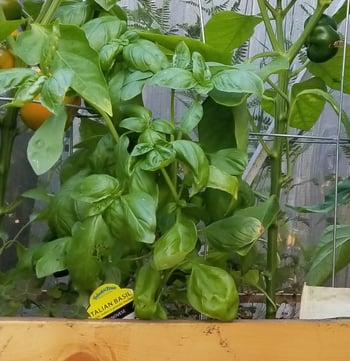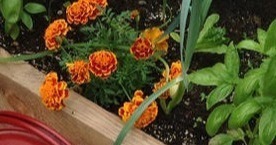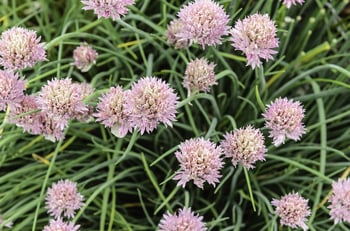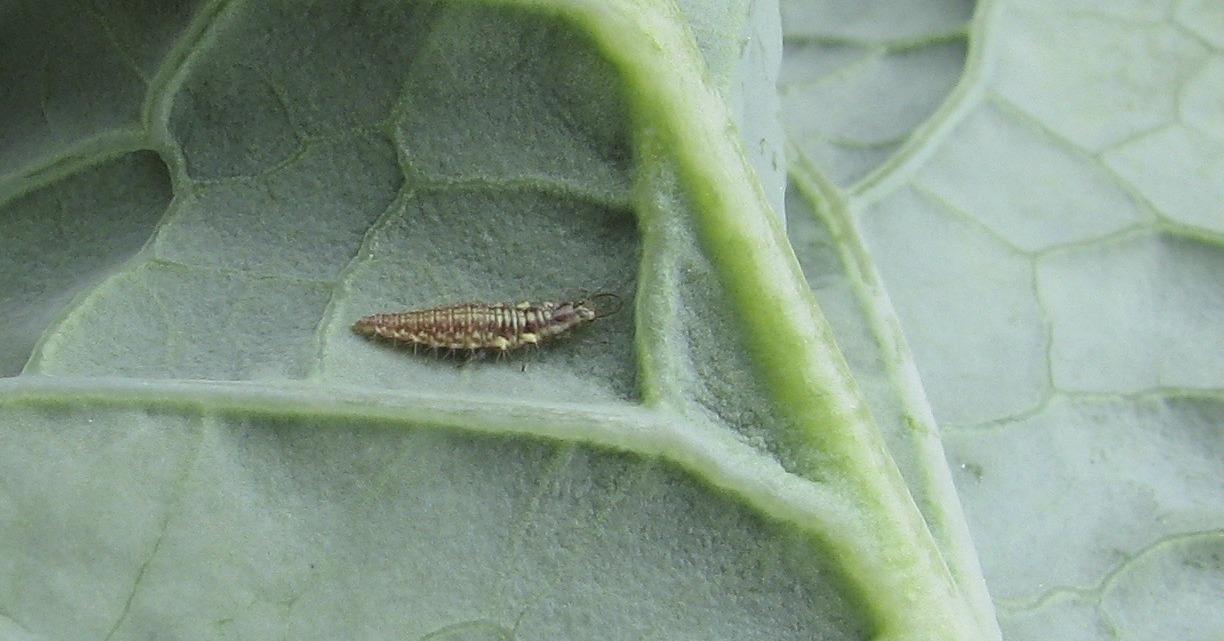A greenhouse gives you a head start on the growing season, better control over your environment, and protection from the elements. But when it comes to pests, it doesn't always mean you're in the clear. In fact, the warm and humid conditions of your greenhouse garden can make them the perfect home for common garden pests.
The good news? You can reduce the risk of infestation without harsh sprays or overcomplicated routines. This guide will walk you through the best natural pest control methods, how to spot early warning signs, and easy steps to keep your greenhouse pest-free all season long.
How to Prevent Pests in a Greenhouse Naturally
Wondering how to get rid of pest naturally? Prevention is always easier than treatment. The more dialed-in your greenhouse is, the less likely you are to attract pests in the first place.
-JPG.jpeg?width=2000&height=1333&name=Side%20Vent%20Continous%20Hand%20Crank%20(1)-JPG.jpeg)
- Airflow and Ventilation: Good airflow helps reduce humidity and makes it harder for pests and mold to take hold. Make sure vents and fans are working properly and that plants aren't overcrowded.
- Sanitation: Keep benches, tools, and containers clean. Sweep up plant debris and remove dead leaves regularly to eliminate potential pest breeding grounds.
- Screening and Sealing: Install insect screens on doors and vents. Check for gaps where bugs might sneak in. Even small openings can lead to big problems over time.
- Quarantine New Arrivals: Before adding new plants to your greenhouse, keep them separate or a few days and check for signs of pests.
Common Garden Pests and How to Identify Them
Early detection is key. The faster you identify a pest problem, the easier it is to manage. But if you already have some problems, you might be curious how to identify bugs or pests in your greenhouse. Here is a quick guide of the common pests seen in greenhouse gardens:
Aphids
Aphids are small, soft-bodied insects that often gather on the tender new growth of plants. They feed by piercing the plant tissue and sucking out the sap, which can weaken your plants and stunt their growth. You might also notice a sticky substance on the leaves called honeydew, which can attract ants or lead to mold.
Prevention Tip: Regularly check growing tips and leaf undersides, especially on warm days when aphids tend to multiply.
Whiteflies
Whiteflies are tiny, winged insects that fly up in a cloud when you disturb a plant. Though small, they can cause big problems in a greenhouse by sucking sap and spreading plant diseases.
Prevention Tip: Whiteflies often hide on the underside of leaves, so flip leaves over when inspecting your plants. Yellowing or wilting leaves are often an early clue.
Spider Mites
Spider mites are difficult to see with the naked eye, but the signs of their presence are unmistakable. You might spot fine webbing between leaves or around plant stems, and leaves may develop a speckled or stippled appearance. The pests thrive in hot, dry conditions, making summer greenhouses especially vulnerable.
Prevention Tip: Increasing humidity and rinsing plants regularly can help slow their spread.
Fungus Gnats
Fungus gnats are tiny black flies that hover around soil and pot edges. While the adults are mostly a nuisance, their larvae can be harmful to seedlings and young plants, feeding on delicate roots. Overwatering and soggy soil make the problem worse.
Prevention Tip: Allowing the top layer of soil to dry out between waterings can help reduce larvae survival.
Thrips
Thrips are slender, fast-moving insects that scrape and suck juice from leaves and flowers. the result is often distorted or streaked plant tissue, along with silvery patches on the foliage. Thrips can spread quickly between plants and are especially damaging in closed greenhouse environments. Sticky traps and regular inspections can help keep them in check.
Prevention Tip: Walk your greenhouse regularly and inspect both sides of the leaves. Catching problems early gives you more control and limits the need for intervention.





Natural Garden Pest Control Methods That Work
When pests do show up, natural pest control can often do the trick. These methods are easy to implement, gentle on plants, and safe for beneficial insects when used correctly. They're also an excellent first line of defense when you're trying to avoid synthetic chemical applications in your greenhouse.
Insecticidal Soap
A gentle option that works on soft-bodied insects like aphids and whiteflies. Spray directly on pests, especially under leaves where they tend to hide. Reapply as needed, especially after watering or heavy condensation.
Best for: Aphids, whiteflies, young thrips
Neem Oil
Derived from the neem tree, this plant-based oil works by disrupting the hormones that pests rely on to grow and reproduce. It also has antifungal properties, making it useful for managing multiple issues t once. Apply neem oil in the early morning or evening to avoid leaf burn and to give it time to be absorbed.
Best for: Aphids, spider mites, whiteflies, fungus gnats
Diatomaceous Earth
This fine powder, made from fossilized algae, acts like microscopic shards of glass to insects and pests. Sprinkle it around the base of plants or near greenhouse entry points. just remember to reapply after watering.
Best for: Fungus gnat larvae, thrips, crawling insect pests
DIY Natural Pest Sprays
Garlic, chili pepper, or essential oil-based sprays can help deter pests through strong scents and irritants. These are best used as a prevention measure or in response to early signs of infestation. Be sure to spot-test your plants before applying widely and avoid use during peak sun hours.
Here are two simple DIY spray recipes you can try:

Garlic Spray
- 2 full bulbs of garlic
- 1 tablespoon of liquid soap (without bleach)
- 1 liter of water
Blend the garlic and water, strain the mixture, then add the liquid soap. Store in a spray bottle and use within a week. Spray directly on plant leaves and stems, especially in the early morning or evening.
.jpg?width=350&name=unnamed%20(7).jpg)
Chili Pepper Spray
- 2 teaspoons of chili power or crushed red pepper flakes
- A few drops of mild dish soap
- 1 liter of water
Mix the ingredients thoroughly and let sit overnight. Strain before applying to avoid clogging your spray bottle. This mixture can irritate the skin and eyes, so wear gloves and avoid inhaling the spray.
These sprays won't eliminate pests entirely, but they're a helpful deterrent and safe to use as part of a broader pest management plan.
Best for: Trips, aphids, general deterrence
Best Companion Plants for Pests Control
By planting pest-repelling herbs and flowers like basil, nasturtiums, or marigolds, you create a more diverse ecosystem that naturally discourages pests. These plants can either repel harmful insects or attract beneficial ones, offering long-term support or plant health without any spraying.

Basil
Pests Targeted: Aphids & Whiteflies
Grows Well With: Tomatoes & Peppers
Additional Benefits: Enhances the flavor of nearby veggies
%2c%20also%20known%20as%20wild%20mint%2c%20a%20popular%20folk%20remedy%2c%20growing%20densely%20in%20garden%2c%20early%20June%20in%20Wisconsin%2c%20USA%20(selective%20focus).jpeg?width=350&name=Horse%20mint%20(binomial%20name%20Mentha%20longifolia),%20also%20known%20as%20wild%20mint,%20a%20popular%20folk%20remedy,%20growing%20densely%20in%20garden,%20early%20June%20in%20Wisconsin,%20USA%20(selective%20focus).jpeg)
Mint
Pests Targeted: Ants & Aphids
Grows Well With: Cabbage & Kale
Additional Benefits: Strong aroma repels multiple insects

Marigolds
Pests Targeted: Nematodes & Aphids
Grows Well With: Tomatoes & Beans
Additional Benefits: Adds color and attracts pollinators

Chives
Pests Targeted: Aphids & Japanese beetles
Grows Well With: Carrots & Lettuce
Additional Benefits: Edible and easy to grow in containers
Beneficial Insects for Garden Pest Management
Sometimes the best way to fight pests is with other insects. Beneficial bugs are a natural part of greenhouse pest management.

- Ladybugs: A favorite among gardeners, ladybugs eat aphids, whiteflies, and mites.
- Green Lacewings: Their larvae are voracious predators that feed on many soft-bodies pests.
- Predatory Mites: Not all mites are bad. These ones go after spider mites and help keep their population in check.
- Parasitic Wasps: Tiny but effective, these wasps lay their eggs inside pests like aphids or whiteflies, helping control outbreaks.
- Beneficial Nematodes: These microscopic organisms live in the soil and target pest larvae like those of fungus gnats.
You can order beneficial insects from garden supply companies and release them strategically based on your pest issues.
When to Consider Stronger Pest Control Methods
Sometimes, despite your best efforts, pests get out of hand. If natural methods aren't working or infestations keep coming back, it may be time to consider more targeted options or professional support.
Look for:
- Ongoing damage despite treatment
- Large numbers of visible pests
- Recurring outbreaks on the same plants
Many garden centers carry organic pesticides that are more targeted and less disruptive to beneficial insects. When in doubt, get in touch with a gardening expert to troubleshoot the issue.
Final Tips for a Healthy, Pest-Free Garden
Keeping pests at bay doesn't require a shelf of sprays. With smart greenhouse design, regular maintenance, and a few natural solutions, you can protect your plants and enjoy a thriving growing season.
Contact Us
If you’re looking for accessories like insect screening, ventilation upgrades, or advice on setting up a more resilient growing space, our team is always happy to help.



